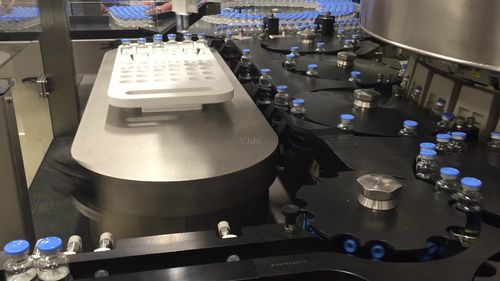Butterfly valve Structure
The closure of the butterfly valve is in the middle of the medium. The effect of the closure on the convection resistance should be considered in the design.

1. Regarding the structure of the butterfly disc of a large caliber butterfly valve, AWWA C504 stipulates that the butterfly disc should not have transverse ribs and its thickness should not be greater than 2.25 times the diameter of the valve stem.
2. The upstream and outlet surface of the butterfly plate should be streamlined.
3. The internal screw should not protrude outside the butterfly plate to avoid increasing the water-facing area.
Rubber Seal Ring
Sometimes the service life of rubber butterfly valves is short, which is related to the quality of the rubber and the width of the sealing surface. The sealing ring of the rubber sealing butterfly valve should be made of high-quality rubber material, and the technical rules should be observed when pressing and molding. The vulcanization temperature cannot be increased arbitrarily and the time can be shortened, otherwise, the sealing ring will be easily aged and cracked. The metal seal surface matched with the rubber seal ring should be wide enough, otherwise, the rubber seal ring is not easy to be embedded. In addition, the shape and position tolerance, symmetry, accuracy, smoothness, and pressure elasticity of the valve body and butterfly plate also affect the service life of the rubber sealing ring.
Stiffness
Stiffness is an important problem in the butterfly valve design, which is related to the factors such as the butterfly plate, a valve shaft, and connection.
(1) Valve shaft dimensions are specified in AWWA C504. The dimension of the valve shaft cannot meet the requirements, and there may be insufficient stiffness, reverse seal leakage, large opening moment, and other phenomena. The stiffness of the axle is related to 1/EI, that is to say, the problem of increasing stiffness and reducing deformation should start with increasing EI. E is the modulus of elasticity. Generally, there is little difference between steel and good material has little effect on stiffness. The moment of inertia is related to the cross-section size of the shaft. The size of the valve shaft is generally calculated by the bending-torsion combination. It is not only related to the torque but also mainly related to the bending moment. Especially, the bending moment of a large caliber butterfly valve is much larger than the torque.
(2) Shaft-hole fit
The old version of AWWA C504 stipulates that the butterfly valve shaft is a straight-through whole shaft. After the 1980 edition, it was proposed that two short axes could be made. AWWA C504 and GB12238 stipulate that the embedded length of the shaft and hole should be 1.5d. In the axial dimension of the stainless steel butterfly valve in Japan, the clearance between the inner edge of the valve body and the butterfly plate supporting end is stipulated. Generally, the clearance is related to the size of the caliber. The clearance between the inner edge and butterfly plate supporting end is between 25 mm and 45 mm.
(3) Butterfly plate structure
The butterfly plate structure is directly related to its stiffness, so it is usually made into a pan or truss shape beside plate shape. In a word, the purpose is to increase the moment of inertia of the cross-section to improve the stiffness.
(4) Valve body structure
Stiffness problem also exists in the design of large-caliber butterfly valve bodies. Generally, there are circular and transverse bars. In fact, the transverse bars only increase stability, not too much, mainly circular bars. It is more advantageous for stiffness to add -shaped reinforcement, but there is a problem of poor workmanship.
Self-lubricating bearings
Most of all of the medium pressure on the butterfly plate are transferred to the bearing through the shaft, so the bearing plays a very important role. Some foreign butterfly valves rotate very lightly, one finger of small caliber valves can rotate, while some domestic butterfly valves rotate very heavily, which is not only related to coaxial, symmetry, processing accuracy, smoothness, and packing quality, but also an important factor is the lubricity of the sleeve material. AWWA C504 standard proposed that the sleeve or bearing installed in the valve body should belong to self-lubricating material. There are wear and lubrication problems in the sleeve, and no rust is allowed. Without bushing, even if the valve shaft is stainless steel, the valve body also has problems with corrosion and gluing. The use of axle sleeves can also increase rigidity.
The connection between axis and butterfly plate
It is advisable to use keys or splines to connect the axle and butterfly plate of a small-caliber butterfly valve, or polygon axle or pin connection. The axle and butterfly plate of a large caliber butterfly valve is mostly connected by keys or cone pins. At present, a pin connection is widely used between the axle and butterfly plate. In bad working conditions, the damage to the connecting pin is mainly due to manufacturing reasons, such as poor coincidence accuracy, inappropriate selection of pin size, the inadequate hardness of the pin, or inappropriate use of materials. The axle and butterfly plate of the large butterfly valve can be connected by a special method.
Structure length
The structure length of butterfly valves develops to a short series, but this should be done with caution. International standards have stipulated the length of the short series structure of flange butterfly valves, but the length of valve structure with higher pressure should not be shortened, otherwise, problems will occur, especially in brittle materials such as cast iron.
For more information, please visit http://www.adamantvalves.com/



